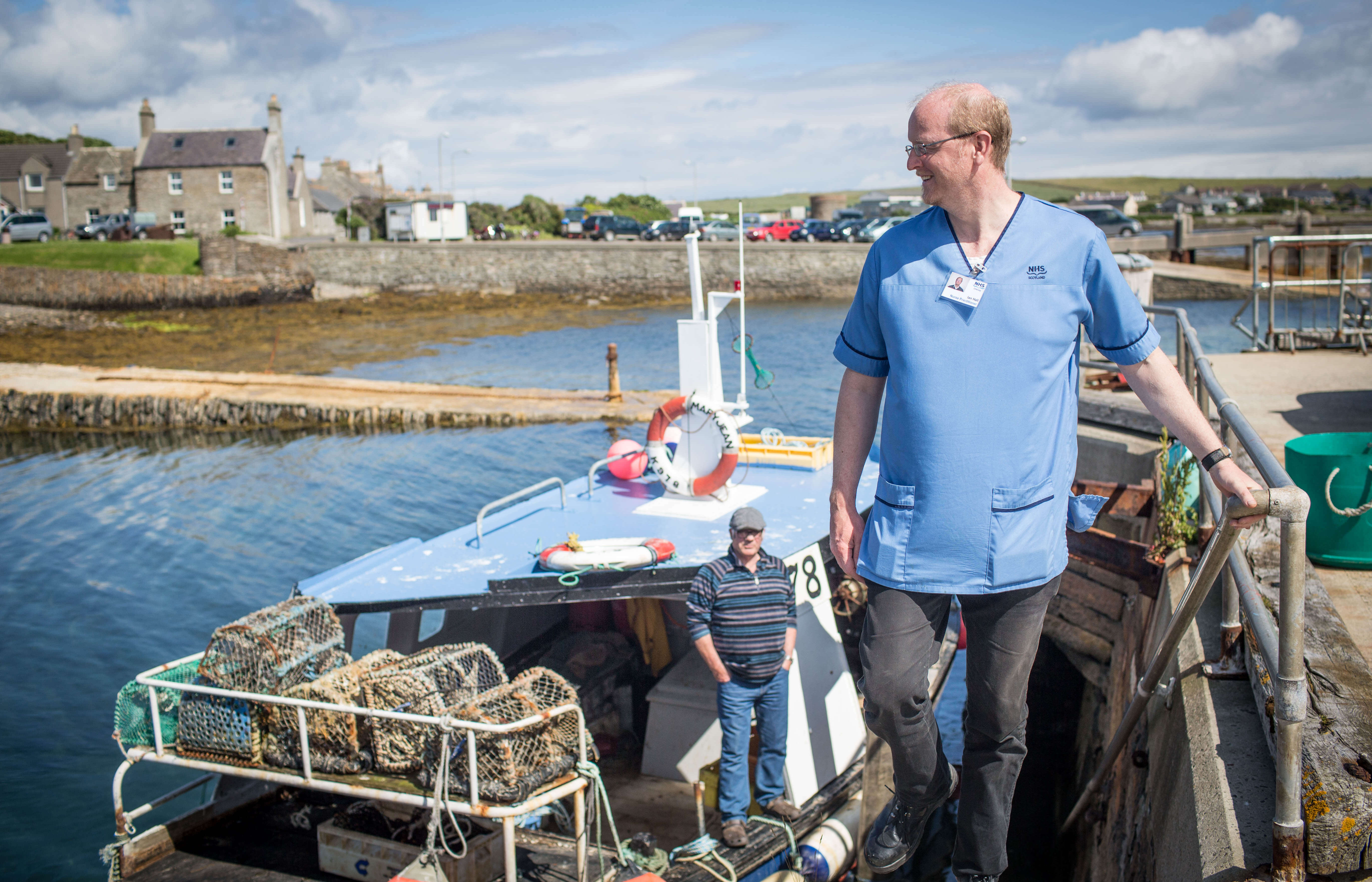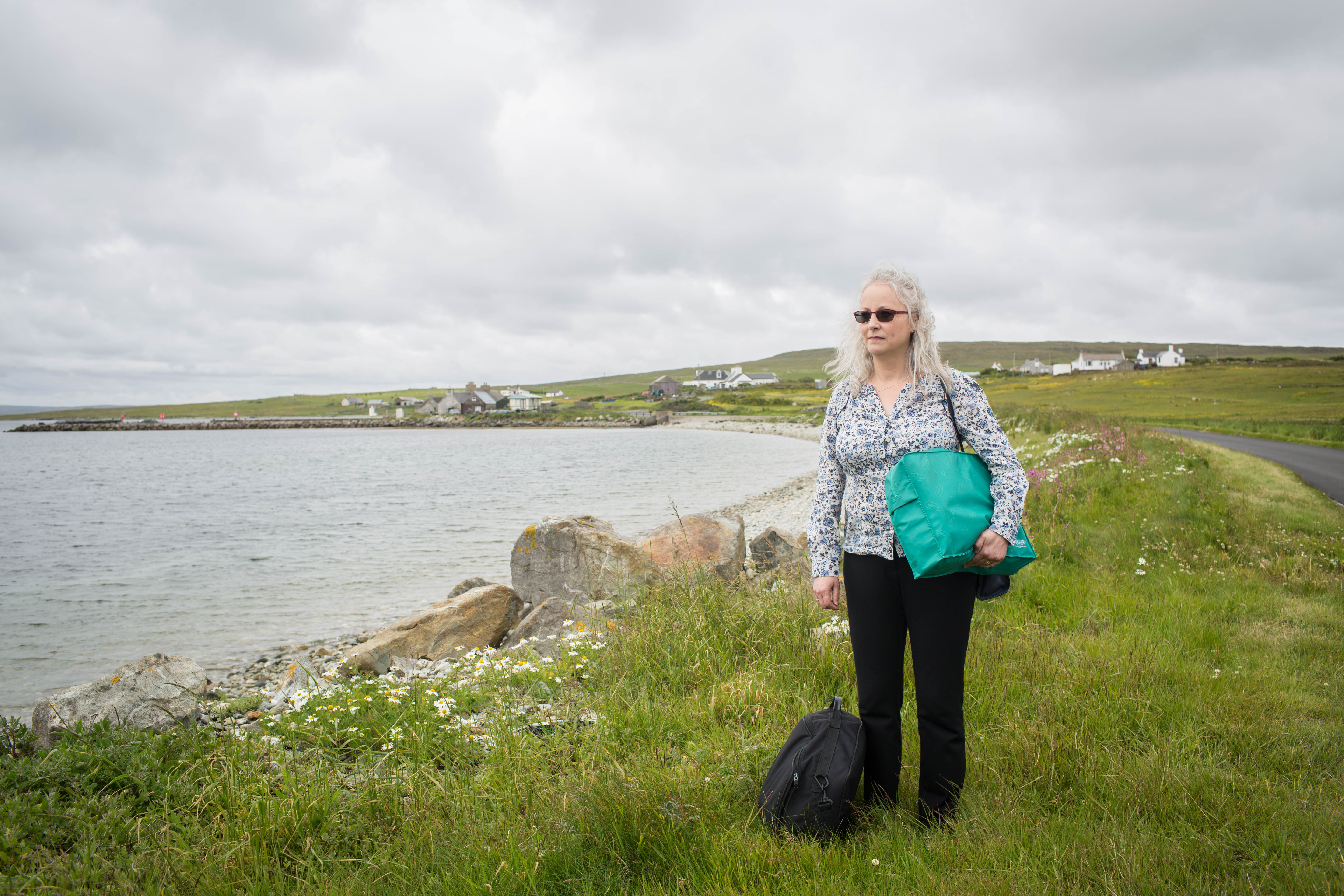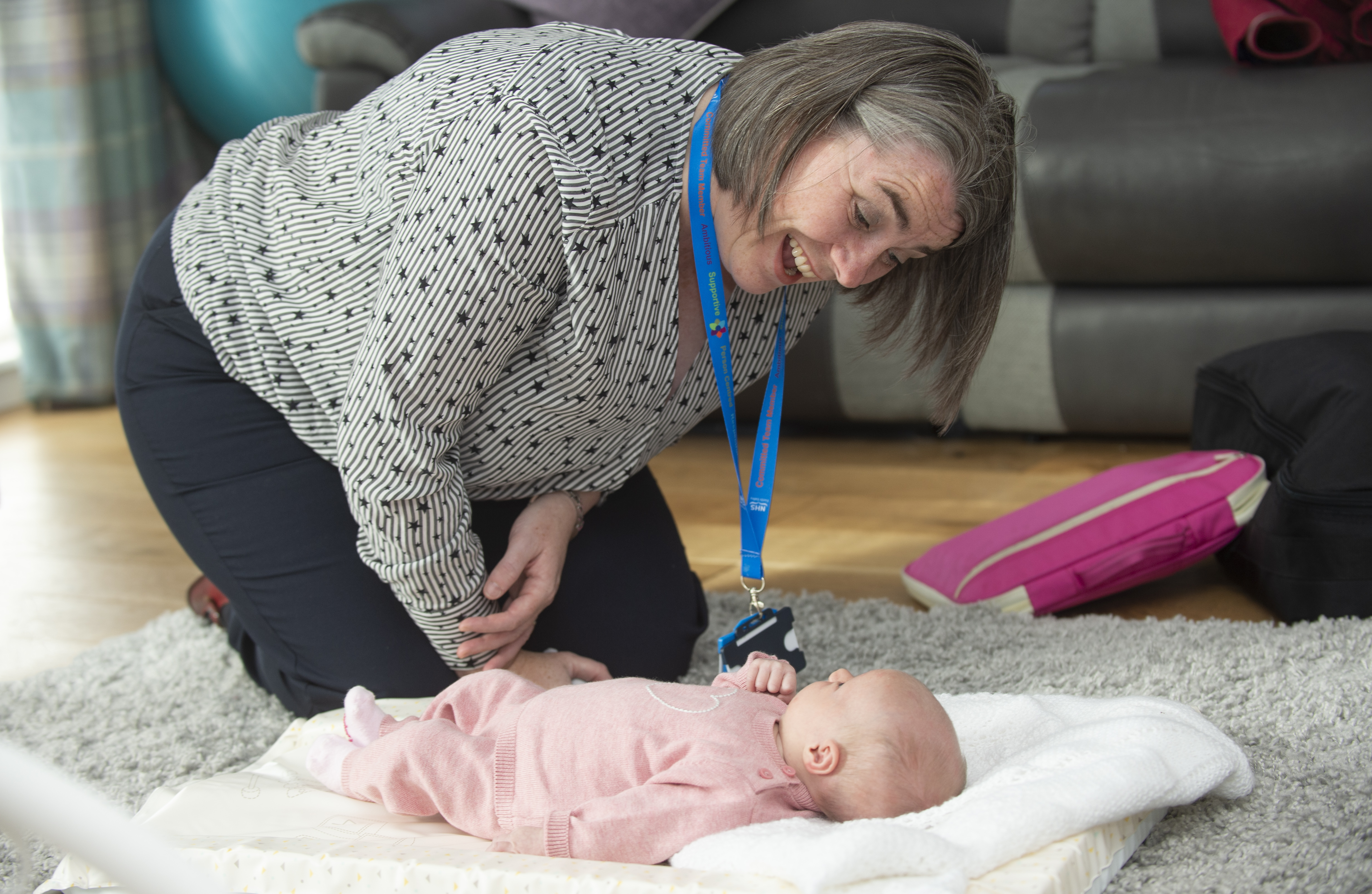
Health visitor
Health visitors work with families until the child starts school. They can support families where children have complex health conditions or neurodevelopmental disorders and can identify and manage common childhood illnesses. Health visitors connect children and families with local community support, provide safeguarding for vulnerable children and families, and support parent-infant and family relationships.
Health visitors in action

Clare Stiles
“It’s a long way from a hospital, and we are struggling to recruit doctors at the moment,” says Health Visitor Clare Stiles. “Community nurses are providing the continuity when it comes to health care here.”
Previously a triple duty nurse, Clare has worked as a Midwife, District Nurse, and Health Visitor, meaning that she has tended to the needs of the youngest and the oldest, and everyone in between. When she came up from the south to work on the island of Yell 23 years ago, she became the school nurse too. “For me, it was a bit like coming home as I grew up in a little village in the middle of Derbyshire.”
Some of the islanders on Yell knew who Clare was before she even stepped onshore. “I had delivered the niece of one of the local lads when I was working down in Chichester,” says Clare. “There was a drink waiting for me at the bar when I arrived.”
As NHS Shetland’s team leader for Child Health, responsible for managing the team and redesigning how things are done, Clare oversees all the school nurses in Shetland, children’s nurses, health care support workers, and Health Visitors. Together, they look after the health and wellbeing of 1,395 children living on 15 different islands, most of which have primary schools and are served by seven secondaries.
There’s a Hospital Children’s Nurse based in Lerwick’s Gilbert Bain Hospital, and a Community Children’s Nurse who works in the community across the whole of Shetland. The Health Visitors are GP-attached and focused on under-5s, and with a healthy birth rate of around 350 deliveries a year, they are kept busy.
As well as managing the service, which she does from an office in Lerwick, Clare maintains her clinical skills by working as a Health Visitor and Practice Teacher on the islands of Yell, Whalsay and Unst. There are 147 under-5s living across these islands, and she is responsible for them all.
Unst is two islands and two ferry crossings away from the Shetland capital, Lerwick. But there are the same social issues as everywhere else –alcohol, drugs, domestic violence, abuse – and Clare has a significant role when it comes to child protection. Together with social work colleagues, she will assess situations involving vulnerable children, attend case conferences and write court reports. “In such a small place, it can get difficult at times,” she says. “But if everyone keeps the child’s best interests at heart, we can still have a good relationship with the families.”
To improve communication between all the organisations that touch on children’s lives, there are regular multi-agency meetings involving education, health, mental health, social work, and the police, where action plans are discussed.
Daily, Clare and her team make contact with GPs, social workers, early years workers, and clinical specialists, keeping in touch about children’s care. The nurses practice autonomously and can refer young people on directly. “It takes courage to practice the way we do, but we have the training and experience to cope with it, as well as the support of the team and managers,” she says. “We are developing a streamlined service that makes life as easy as possible for families, and we are asking them how things can be improved.”
At Unst Health Centre, Clare holds a fortnightly child health clinic and catches up with colleagues before going out on home visits. “It’s important that I keep in touch with staff,” she says. “They can tell me whether there have been any concerns or health issues for any of the children.”
“As a practice teacher, I take student health visitors out on clinical placement and tie in theory with practice,” she says. “I love seeing them develop as they go through the stages. They blossom, and it’s wonderful to see.”
She hopes to attract newly qualified nurses back once they have completed their training and encourages Shetland-based nurses to pursue Heath Visiting as a career. “If we train our own, they tend to stay,” says Clare. “So, we act as ambassadors to inspire them.”
“I want our nursing to be excellent. To be the very best it can possibly be, and to make a difference to people’s lives,” says Clare.
Adapted from the write-up of an interview by Pennie Taylor

Debbie Wishart
My post with NHS Forth Valley covers rural Stirlingshire. It’s an affluent, often remote community. There are a few villages, but it’s mainly farms, with roughly 200 families. Visits often involve tricky journeys along remote, winding roads. I sometimes travel to these visits thinking the road has ended – but there will be a farm further along, hidden from view. This can be a tight-knit community, and I have to be mindful that often families are related, which requires particular thoughtfulness and sensitivity around professional boundaries. Within my caseload there are families with additional needs and children with long-term and life limiting conditions. I am able to draw on the breadth of my nursing and health visiting expertise to provide the more intensive support that these families need. I absolutely love this job; I wouldn’t do anything else.
As a health visitor I get to know the children and families I meet over a five year-span. There is strong evidence that the first 1,000 days of a child’s life are the most important. It is a unique and privileged position to work with families for this extended time – you can see them flourish, you can be there for them in times of crisis and help them through that. Becoming a parent is such a significant change in an adult’s life and it’s about me being able to support them through that challenge to enable them to meet the needs of their child and to offer the information they require to make an informed choice about what is best for their child.
It is essential as a health visitor to establish and maintain a therapeutic relationship with a family – but it is also about being open and honest. You always want to work with a family and at the heart of that is communication skills and emotional intelligence. Often, I work with families with additional needs, or complex family dynamics. I need to have courageous conversations to make sure children are safe and have all their needs met.
I use motivational interviewing which enables people to come up with their own solutions to their own problems. Through these conversations I am able to help a family identify their strengths as well as the issues. There is a risk that families only hear negative messages, and the family just switches off. My role is to find something we can build on and use, no matter how small. It’s all about respecting families. Even if a family does disagree with you, there’s normally a reason behind that – it’s about giving them the time and the space and listening deeply to understand where they are coming from because their priorities could be completely different to mine. Together we find that common ground.
My professional knowledge includes the ages and stages of development as often parents are concerned about where their children are so it’s about alleviating their stresses and anxieties where possible. Sometimes the greatest impact I can have is trying to model nurturing behaviour to build attunement and attachment – getting down on a floor and interacting with a baby. The parent sees that and thinks ‘oh maybe I could do that’.